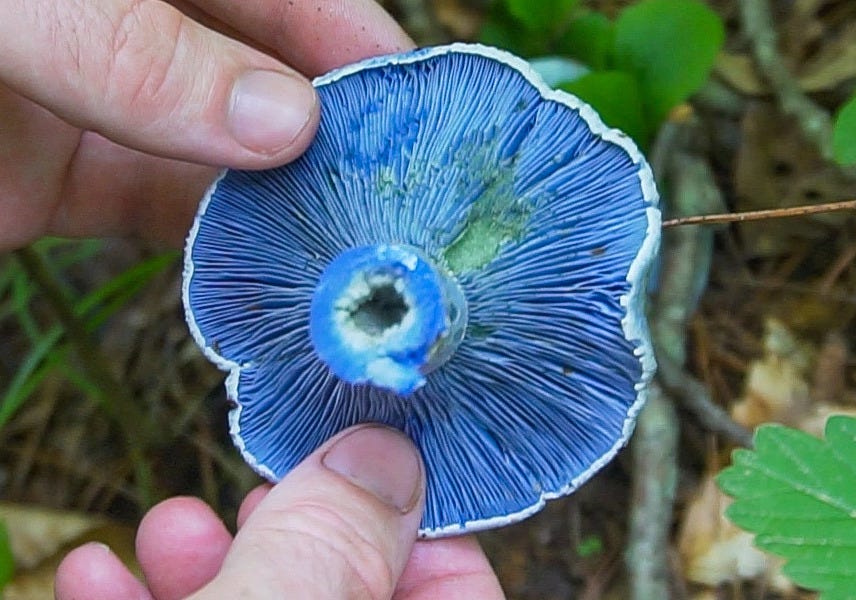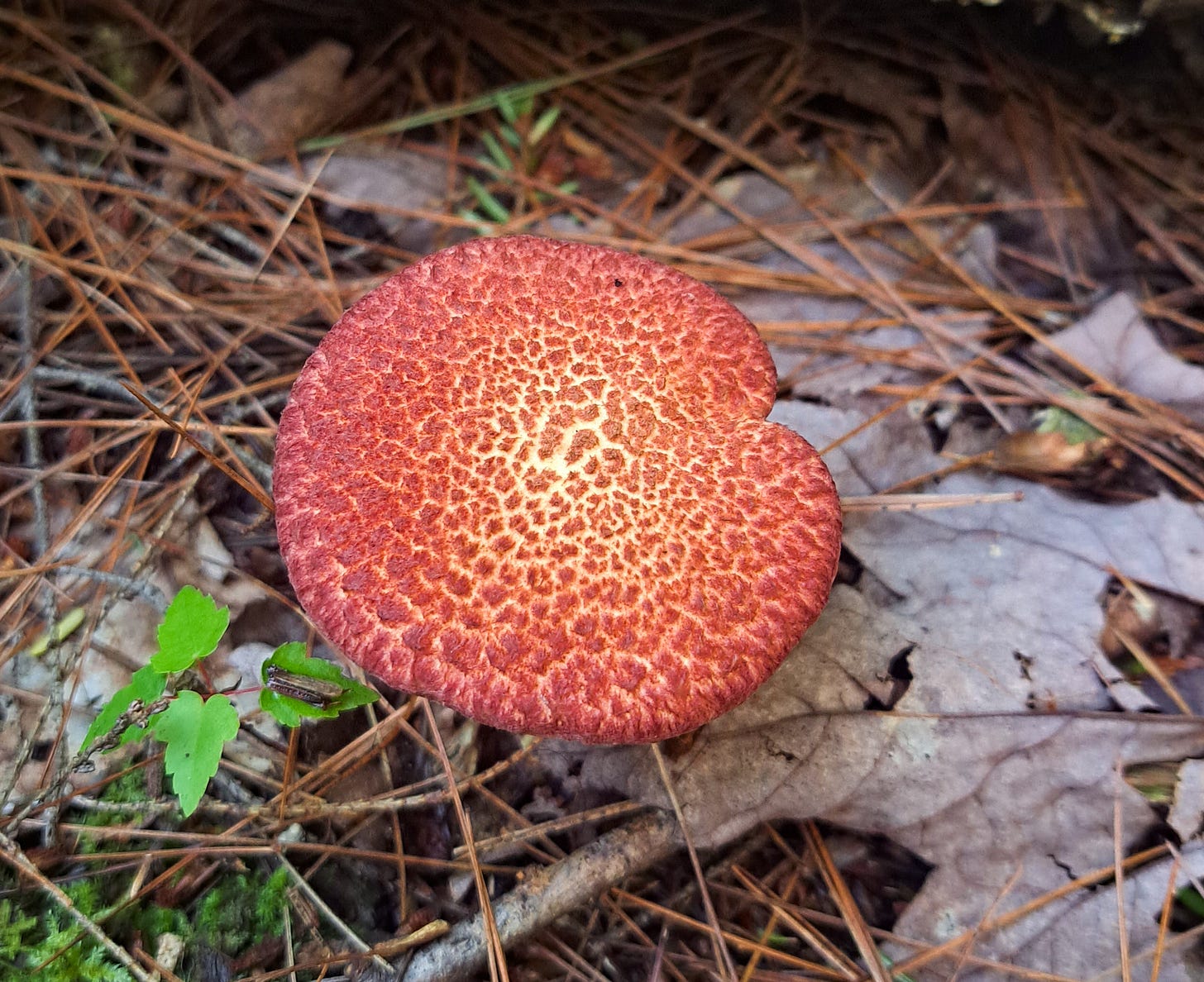This is a guide to 11 of the edible and medicinal mushrooms that you can forage
in the summer. This article will be most relevant to the forests of Eastern North
America, but a lot of these mushrooms are widespread across the globe. Make sure to
properly identify and thoroughly cook the wild mushrooms you do collect.
1. Beefsteak Fungus
Beef Steak Fungus (Fistulina hepatica) is a shelf mushroom that looks similar to raw meat. If you cut the mushroom open, it has a texture and marbling that looks similar to steak. Beef steak is one of the few mushrooms that could be eaten raw, however I prefer it cooked. It has a citrus-like acidic taste with a texture of steak.
These mushrooms mostly form on the sides of oak trees in the summer. Their color ranges from pink to dark red. Sometimes, the mushrooms can be sticky and gelatinous and ooze a dull red liquid. I like to slice beef steak fungus into thin strips and cook it with actual meat. It is porous and absorbs the flavor of what it's cooked with.
2. Crown Tipped Coral
Crown tipped coral (Artomyces pyxidatus) is a common mushroom that resembles coral in the ocean. This particular coral mushroom is distinguished from others because it has crowns or fingers on on top of each stem. This species grows on top of decaying wood and have a loose structure compared to other look-a-likes like Ramaria. Crown tip coral have a white to off-white cream color and are easy to find in the late spring and summertime.
These mushrooms are fairly brittle and can be easily picked apart. These mushrooms are edible and best cooked in soups and stir fries. They don’t saute well because they are so brittle.
3. Indigo Milk Cap
Indigo milk cap is a mushroom that is found in the middle and southern portions of the Appalachian Mountains and South America. Blue is one of the most rare colors among mushrooms and plants. This mushroom is in the milk cap genus, so it exudes a Milky latex when it's bruised or cut. The mushroom is a vivid indigo color on the underside, but it has a pale blue color on top of the cap making it surprisingly hard to spot sometimes.
This mushroom could used to make it Indigo dye and is associated with different trees like Oak, Beech and Pine. The young Indigo Milk Cap form a flat cap with thick edges. As the fungi matures, it begins to take on more of a vase shape. The smell of indigo milk cap reminds me of Fruity Pebbles for some reason. Indigo milk caps are edible and have a similar texture to portobello mushrooms. They tend to change the color of the food, that's cooked with them to a bluish green color.
Some lookalikes include the celandine milk cap which has a slight bluish hue and there are a few cortinarius species like like elegant blue webcap that have similar colors.
4. Painted Bolete (Suillus spraguei)
Painted Bolete is a common mushroom with a unique color pattern. The cap and stem is freckled with red scales and it has a vibrant yellow pore surface underneath. These mushrooms have a mycorrhizal with pine trees, so they exchange nutrients and water with the roots of these trees. Pine forests are good place to look for these mushrooms. These are kind of a bland tasting mushroom, but they aren’t a bad edible. They add a lot of color to your foraging basket.
Keep reading with a 7-day free trial
Subscribe to Son of a Bear’s Substack to keep reading this post and get 7 days of free access to the full post archives.








